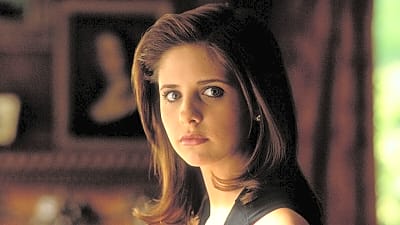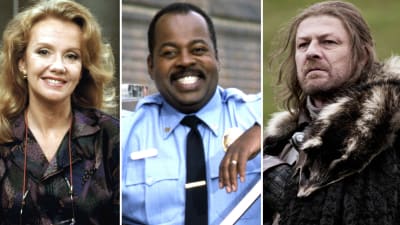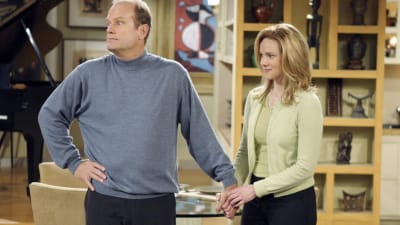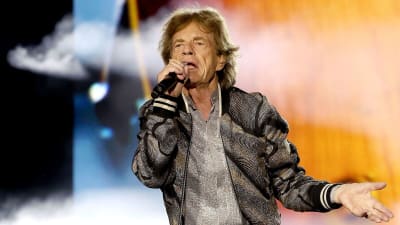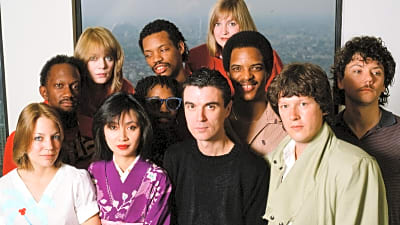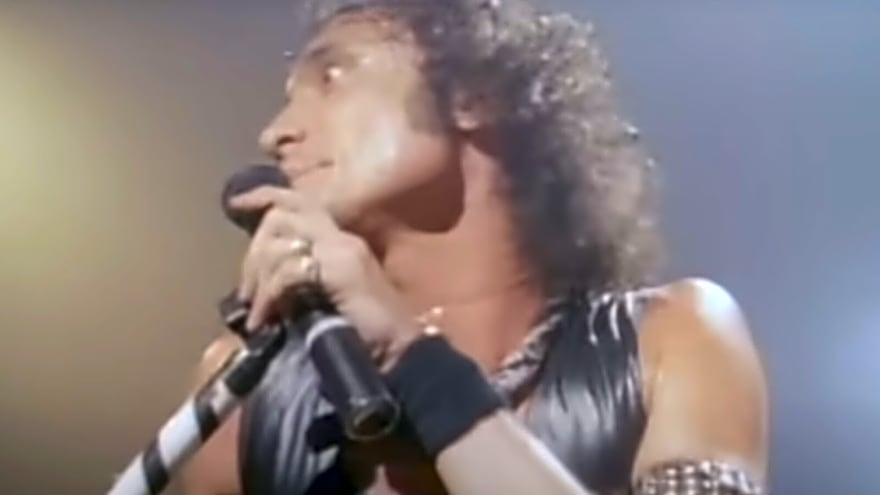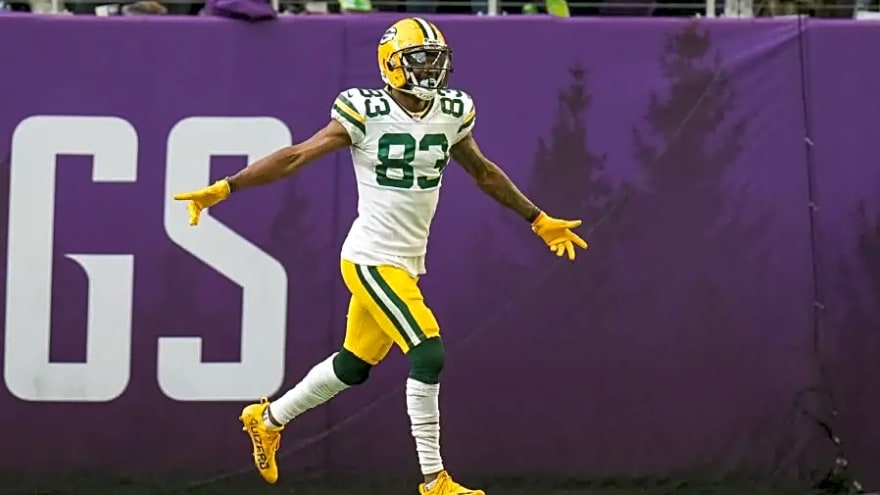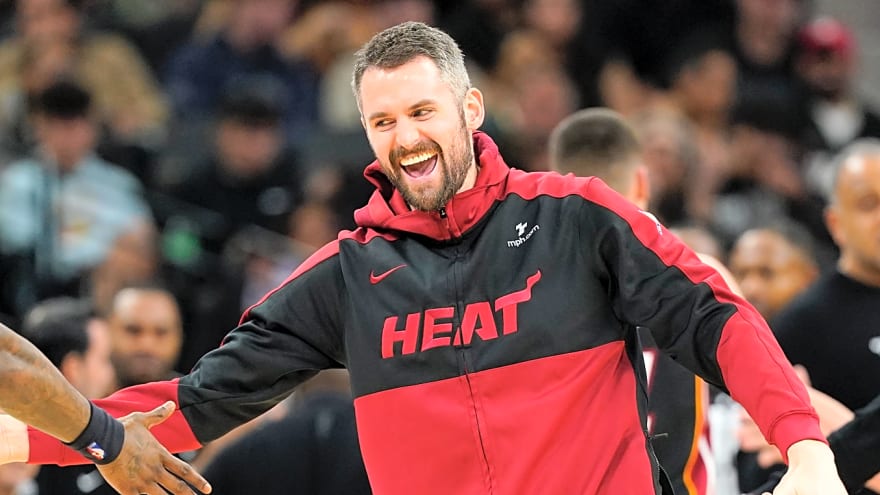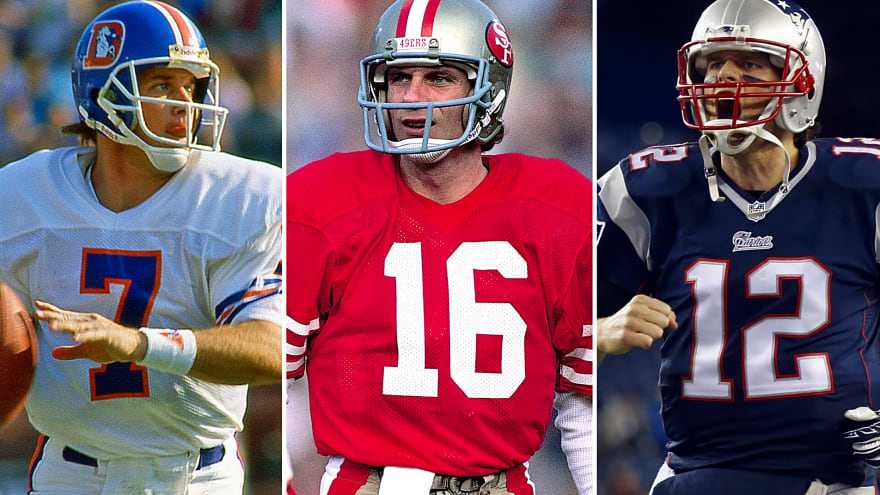
As if it’s not enough that House Targaryen is having a civil war on House of the Dragon, it seems like they’ll also be facing an identity crisis. The trailer for House of the Dragon season two, episode seven teases that everyone is in turmoil about who they are and the choices they’re making. With only two episodes remaining in this season of House of the Dragon, this sneak peek at the series’ penultimate episode reveals a tense present and a bloody future.
You can check out the full trailer for House of the Dragon season two, episode seven, below.
There’s a new dragonrider for Seasmoke, Addam of Hull. But where do his loyalties lie? And what does he want? It’s too soon to tell. Meanwhile, this new arrival seems to have rattled everyone on Rhaenyra’s side of the island. Jace asks in the trailer for House of the Dragon season two, episode seven, “House Targaryen is the blood of the dragon. If any may lay claim to it, what are we then?” We feel like that’s a big question House of the Dragon is intent on exploring. Is there anything to the myth of Targaryen blood… or is it all just propaganda?
Regardless of the finer points of dragon lore, dragons are about to have a huge impact on many in the Seven Kingdoms. Although Rhaenyra is sure that dragons will bring peace in this House of the Dragon trailer, it feels like they’ll just bring more destruction. Alicent doesn’t seem to feel too good about the direction things are going either. And Daemon has his hands full at Harrenhal where he appears to be unraveling more and more with every passing episode.
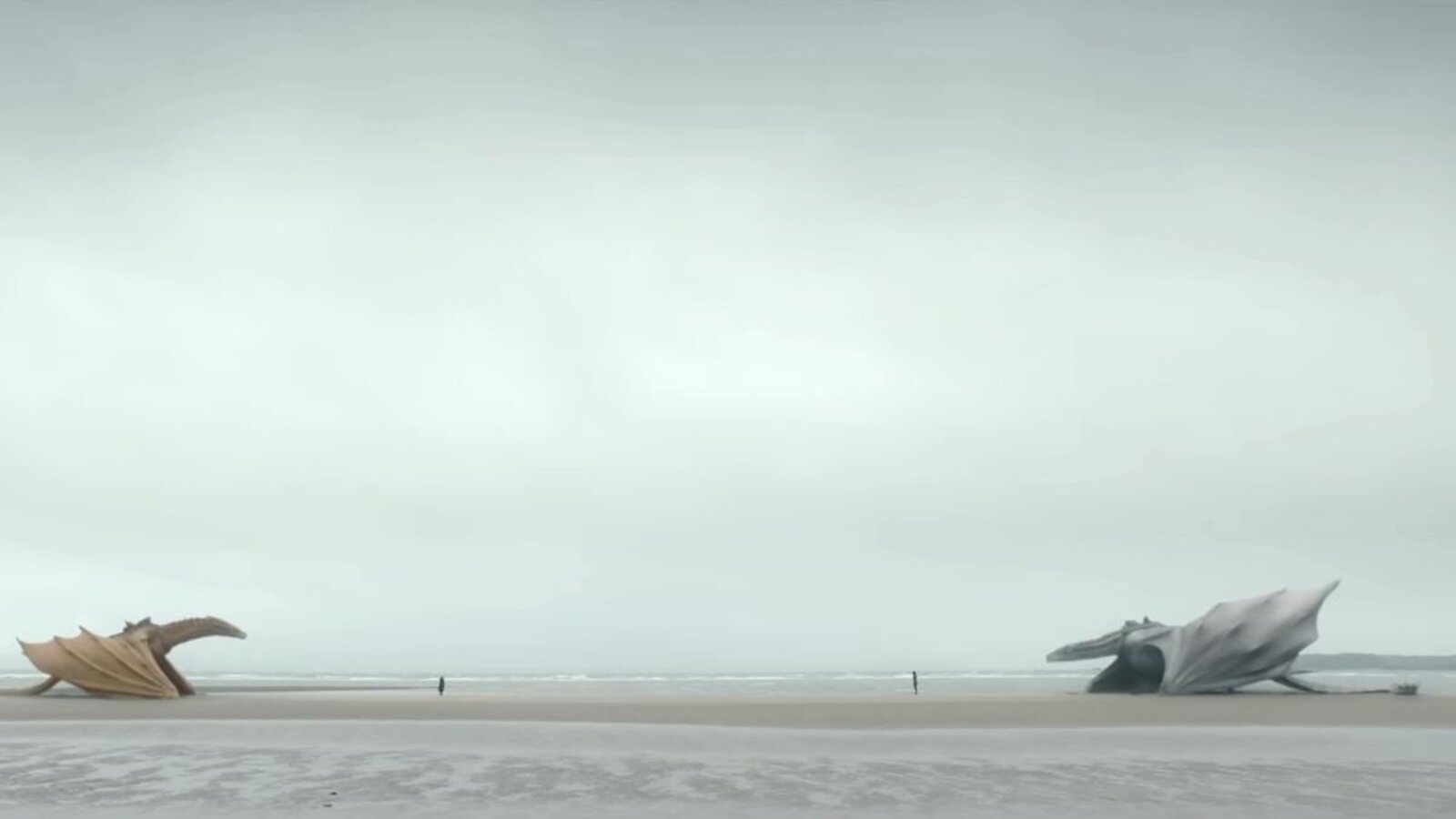

Where will this season leave all our major players? House of the Dragon season two, episode seven, will air on July 28 at 9 PM on HBO and Max, and then’ll we’ll get to see exactly what its trailer is tee-ing up. You can check out more about House of the Dragon season two’s full release schedule here.
More must-reads:
- 23 actors who possess instantly recognizable voices
- 20 celebrities you forgot appeared on 'Frasier'
- 20 TV shows where the original leads faded into the background
- 20 iconic TV shows that have zero rewatchability
- 20 characters who would make the absolute worst significant others
Breaking News
Trending in Entertainment
TODAY'S BEST

Maple Leafs Want to Trade Recently Signed Forward
The Toronto Maple Leafs reached an agreement on a contract extension with 23-year-old forward Nick Robertson, avoiding an arbitration case. Robertson signed a one-year deal with the Maple Leafs, earning him $1.825 million against the salary cap. While Robertson signed an extension with the Maple Leafs, it’s not likely he sticks around in Toronto for too much longer. According to Elliotte Friedman on the 32 Thought Podcast, the Maple Leafs have more players on their roster than they’d like and Robertson is the low hanging fruit in the lineup. “The Maple Leafs have to clear some bodies there,” Friedman said. “There’s a lot of them” Robertson has been connected to teams like the Pittsburgh Penguins and Columbus Blue Jackets, but it’ll be up to the Maple Leafs to decide if/where they want to send him. “I definitely think the Maple Leafs have work to do here,” I don’t know what their timeline is, but nobody expects them not to do things before puck drops, that’s for sure.” For a number of years, Robertson was one of the top prospects in the Maple Leafs system but hasn’t been able to find regular time in the NHL lineup. Whether through his own development as a professional hockey player or the Maple Leafs not having room in the lineup, Robertson hasn’t seen much NHL time in his career. Robertson appeared in a career-high 69 games during the 2024-25 season, recording 15 goals and seven assists for 22 total points. Usually relegated to the bottom six of the Maple Leafs’ lineup, Robertson has played in 156 career games with 32 goals and 24 assists for 56 points. Originally a second-round pick (53rd overall) of the Maple Leafs in 2019, Robertson’s time in Toronto might be coming to an end soon. Getting a new contract signed, even for a year, takes away another hurdle to cross for interested teams.

Brewers righty deserves consideration as dark-horse Cy Young candidate
The Milwaukee Brewers' trade with the Boston Red Sox early in the season flew under the radar. The Brewers acquired former top prospect Quinn Priester from the Red Sox, sending outfield prospect Yophery Rodriguez to Boston on April 7. Pitching prospect John Holobetz was sent to the Red Sox on May 5 to complete the trade. Priester had been expected to be a top-of-the-rotation arm, lauded for his athleticism and plus fastball and curve. However, he struggled during his time in the majors in 2023 and 2024, posting a combined 6.23 ERA and a 1.555 WHiP over 99.2 innings, striking out 69 batters with 41 walks while serving up 19 home runs. Despite a solid outing in his only appearance for the Red Sox, Priester remained in Triple-A as nothing more than pitching depth. That changed with his arrival in Milwaukee. He has exceeded expectations, either as a traditional starter or following an opener. Priester has posted a 3.15 ERA and a 1.190 WHiP over his 114.1 innings for the Brewers, striking out 93 batters with 38 walks. Opponents have mustered a meager .228/.294/.382 batting line in 471 plate appearances with just 13 homers. The Brewers' 64-48 record entering Tuesday is the best in the majors despite a nondescript rotation. While Freddy Peralta is a top-of-the-rotation arm in his own right, staff ace Brandon Woodruff missed all of 2024 and most of the first half of 2025. Pitchers such as Chad Patrick, Tobias Myers and Jose Quintana are back-of-the-rotation arms at this point. The Brewers needed someone to step up with Priester being the unlikely hero. Pitchers Paul Skenes and Zack Wheeler are the prohibitive favorites to win the National League Cy Young Award. BetMGM does not have Priester listed as one of the 10 most likely candidates to take home the hardware. However, Priester's performance, coupled with the Brewers' success this season, is worthy of attention. If he can continue to perform at this level, Priester deserves at least some consideration on the ballot.

One NBA team emerging as favorite to sign Ben Simmons
Ben Simmons may be headed back to the Atlantic Division. The New York Knicks appear to be the favorites to sign the former NBA All-Star forward Simmons in free agency, Brett Siegel of ClutchPoints reported Tuesday. Siegel adds that it is expected to be a veteran’s minimum contract for Simmons if he does end up in New York. Along with the Knicks, the Boston Celtics have also been at the forefront of the Simmons sweepstakes, Siegel adds. However, the Celtics signed fellow veteran frontcourt piece Chris Boucher on Tuesday, seemingly taking them out of the running for Simmons. Simmons, 29, is still unsigned over a month into the free agent period. He finished out last season with the L.A. Clippers, averaging 2.9 points, 3.8 rebounds, and 3.1 assists over 16.4 minutes per game in 18 appearances off the bench. He also previously played in the Knicks’ division, beginning his career with the Philadelphia 76ers and then getting traded to the Brooklyn Nets in 2022. The Knicks could foreseeably use another big body off the bench. However, a Simmons signing would likely be more of a flier than anything after they signed a former Sixth Man of the Year winner to carry their second unit and also added a versatile bench forward who is capable of playing and defending multiple positions. Simmons is clearly little more than minimum-contract fodder at this point of his NBA career. But as a three-time All-Star and a two-time All-Defensive selection with some playmaking juice still left in him as well, Simmons appears to be closing in on another chance in the league.

The teams that should have won the Stanley Cup (but didn't)
In the words of the great Minnesotan indie rocker Paul Westerberg, “opportunity knocks once, then the door slams shut.” In the doldrums of summer, fans of the Edmonton Oilers have nothing to but wonder if their opportunity really is gone and watch their CFL team lose. It is exceedingly difficult to find the right mix of talent, defense and guts to reach the Stanley Cup Final, a feat Edmonton achieved during each of the past two postseasons. Without a ring to show for it, thanks to the rival Florida Panthers, all they got for their troubles was two years closer to the end of Connor McDavid’s contract, which runs out next summer. Despair won’t set in for Oilers fans until they’re certain the window is closed, that McDavid is leaving, or both, but it can be difficult to see the writing on the wall before it’s too late. Countless teams with strong, sustained runs near the top have convinced themselves next year will be the one, only to find out that last year was the one, and they missed it. I’ve pored through post-expansion NHL history to identify four era-specific teams that had the talent and the opportunity to win the Stanley Cup but couldn’t get over the hump. You’ll find out why they could have won, when they should have and why they didn’t in one list of great teams you won’t be eager to see your favorite club join. New York Rangers (1971-75) Why they should have won: Coming off consecutive 109-point seasons and a six-game loss to Bobby Orr’s Bruins in the 1972 Cup Final, the Blueshirts boasted veteran standouts like superstar center Jean Ratelle and sniper Rod Gilbert as well as up-and-coming stars like all-world D-man Brad Park and two-way pivot Walt Tkaczuk. Backstopped by Eddie Giacomin and led by Emile Francis behind the bench, the Rangers were one of just four elite teams in a top-heavy league. In the summer of 1972, three of those teams lost key men to the upstart WHA: Boston could not match Cleveland’s offer for playoff hero Gerry Cheevers, the Chicago Blackhawks watched Bobby Hull (literally) accept a giant check to play in Winnipeg, and Montreal Canadiens’ star puck mover J.C. Tremblay became the inaugural captain of their eventual rivals the Quebec Nordiques. The Rangers spent freely on extensions to avoid an exodus of their own and seemed destined to conquer the NHL within the next few seasons. Why they didn’t: After falling short to the high-flying Bruins and gritty Hawks in the early part of the 1970s, the Rangers then fell prey to a pair of emerging superpowers. In 1974 and 1975, they lost winner-takes-all games to the rival Philadelphia Flyers and New York Islanders, respectively. The following season Francis, who doubled as GM and was frustrated by his inability to cash in on the already waning distraction of the WHA, swung a desperate trade that sent Park and Ratelle to Boston for Carol Vadnais and an aging Phil Esposito. He was fired shortly thereafter. ‘Espo’ was better than you remember on Broadway, averaging over 35 goals per 82 games, but his stint as captain was a dud. New York would miss the postseason entirely in Esposito’s first two seasons before Swedish imports Ulf Nilsson and Anders Hedberg helped him fire the Rangers to a trivia question Cup berth in ‘79. Still, their best chance at winning it all left town with Park and Ratelle, both of whom enjoyed brilliant second acts in Boston. Biggest miss: Just months after shrewdly insulating himself from the fallout of the WHA’s formation, Francis’s plan for world domination was already working like a charm. Esposito, then the joint talisman of Boston’s irresistible attack, went down with a serious knee injury two games into a first-round Stanley Cup rematch. The Blueshirts proceeded to overwhelm Orr with their forecheck as Tkaczuk and Calder-winner Steve Vickers combined to fire nine goals past Cheevers’ old partner Eddie Johnston and a 44-year-old Jacques Plante. Perhaps Park and Gilbert were too preoccupied imagining their names being etched onto the Cup after trouncing the B’s in five to remember they still had another two series to win: the Rangers were badly unprepared for what came next. In the semifinal round against the Blackhawks, Dennis Hull torched New York for five goals and 10 points while Tony Esposito held the Rangers to 10 goals total. The five-game stand was never close, and the stars wouldn’t align for the Rangers for another 21 years. Philadelphia Flyers (1995-98) Why they should have won: After missing out on a major upset of the almighty Oilers in Game Seven of the 1987 Stanley Cup Final and losing to the Canadiens in the 1989 Conference Final, the Philadelphia Flyers quickly fell apart. By the summer of 1992, the Flyers had shipped off Brian Propp, Dave Poulin, and Rick Tocchet, among others. The only notable return pieces were explosive winger Mark Recchi (acquired from PIT for Tocchet) and a young power forward named Rod Brind’Amour (acquired from STL for Ron Sutter). Amid an unprecedented playoff drought, the Flyers still needed more firepower, so they went and got some heavy ordinance at the 1992 NHL Entry Draft. The Orange and Black paid a king’s ransom to the Nordiques for their unsigned No. 1 pick from 1991, Eric Lindros, who arrived in Philly with unparalleled (and wholly justified) hype. The Flyers were back in the postseason within three years after team legend Bobby Clarke took the helm as GM for the second time in 1994 and traded Recchi for future 50-goal winger John Leclair and roving defenseman Eric Desjardins. Their core complete, Lindros, Brind’Amour, Leclair, and Swedish sniper Mikael Renberg gave the Flyers the biggest, baddest and best top six in the NHL. Why they didn’t: The Flyers picked a bad time for their ascendency, losing their deepest playoff runs to a couple of signature teams from the turn of the century. The 1995 New Jersey Devils and the 1997 Detroit Red Wings both found ways to neutralize Lindros (by his standards, at least) and exploit the Flyers’ so-so depth on their way to the Cup. Philadelphia’s goaltending wasn’t much help, either. Matching up an aging, temperamental Ron Hextall and his assorted platoonmates against an Eastern Conference murderer’s row featuring Martin Brodeur, Dominik Hasek and Curtis Joseph was something like bringing a water balloon to a gun fight. Biggest miss: No one could blame the Flyboys for their four-game dismantling at the hands of the Detroit Red Wings in 1997. That the Flyers were ever favored against the Wings, who boasted eight future Hall-of-Famers, speaks to their imposing reputation during the late 1990s. Philadelphia’s true misfires bumpered their lone Cup appearance of the Lindros era. Getting goalie’d by John Vanbiesbrouck in 1996 was bad enough, but Clarke’s attempts to secure a rematch with Detroit in 1998 were almost comically misguided. His new coaching hire, Bruins’ legend Wayne Cashman, was demoted after 61 games in favor of Roger Neilson. His big RFA signing, Chris Gratton, was a dud who would end up back in Tampa within 14 months. A chaotic season ended quietly as Hasek and the Buffalo Sabres stifled Philly in five games. Lindros and Clarke would fall out in a protracted saga over the next three years, and the Flyers stumbled into two decades of mediocrity and infinite “what-ifs?” after the end of the Big E’s brief, brilliant run at the top. Vancouver Canucks (2009-12) Why they should have won: Marc Crawford, Markus Naslund and the "West Coast Express" era of early-2000s Canucks hockey are a case study in how rarely fun hockey and winning hockey intersect. The goals flowed freely, but Vancouver’s wide-open style and bad goaltending were a lethal mix in the postseason. Crawford got the axe after a pedestrian 2005-06 campaign, and new bench boss Alain Vigneault made it his mission to mold the free-scoring ‘Nucks into an elite defensive group. "AV" got a big headstart that same offseason when Naslund’s buddy Todd Bertuzzi was dealt for Roberto Luongo. Naslund followed Crawford and Bertuzzi out the door before long, and Vigneault rebuilt his leadership group around superstar goalie Luongo, the already-established Sedin twins, and future Selke-winner Ryan Kesler. By 2010-11, that core was supported by perhaps the deepest blue line of the cap era: Kevin Bieksa, Alex Edler, Christian Erhoff, Dan Hamhuis and Sami Salo. The results were predictably dominant. With a first-placed offense, first-placed defense and first-placed team, the Canucks marched on toward their championship destiny. Why they didn’t: Would it be too cute to type “Tim Thomas” and finish up? After a first-round war with the defending champion Blackhawks, a tough series against Hamhuis’s old friends in Nashville, and a five-game walkthrough of a formidable Sharks team in the WCF, the Canucks found the one question for which they had no answer: Thomas, the Bruins’ star netminder. The portly, 37-year-old Vezina winner concluded his improbable rise to glory at Vancouver’s expense on and off the ice, shipping just eight goals in seven games. The memory of the scrambling, scruffy Thomas must still haunt the brothers Sedin, who lost to three straight Cup champions from 2010-12. Biggest miss: It’s hard to run down any runner-up. Winning three series is never easy, and taking Boston to Game Seven while so impotent on offense was a credit to the Canucks’ ability to grind out tough wins. The next season, their resolve wasn’t quite as apparent. Despite having locked up a second-straight Presidents’ Trophy, Vancouver got blown away in five games by the eighth-seeded L.A. Kings. You may recall how well that year went for the Kings, who never faced elimination and didn’t even see Game Six until the Cup Final. In retrospect, the Canucks could have had a similarly easy path. Instead, some combination of Jonathan Quick’s heroics in goal, an injury to Daniel Sedin, and the offseason departure of Erhoff prevented Vancouver from breaking down a stubborn Kings defense. It would be eight years before the ‘Nucks won another series. San Jose Sharks (2016-19) Why they should have won: The Sharks’ section of this piece could encompass over a decade from when the team traded for Joe Thornton in 2005 until his playoff swansong in the Bay Area in 2019. The newly elected Hall of Famer’s excellence and longevity were such that San Jose was never too far away from contention while he was around. The Sharks missed the playoffs just twice during Thornton’s tenure and won at least a series on nine occasions. It’s ironic, then, that their best chance at a Stanley Cup came just as “Jumbo” began to fade into the background. In desperate need of a refresh after the team’s first postseason miss of the Thornton era, GM Doug Wilson replaced longtime coach Todd McLellan with former Devils’ bench boss Pete DeBoer in the 2015 offseason. Joe Pavelski, meanwhile, ended a captaincy carousel that had seen both 17-year man Patrick Marleau and Thornton stripped of the ‘C’ over the previous five years. The leadership changes worked, and with late bloomer Brent Burns emerging as one of the most dangerous blue line scorers in the sport and primed stars Pavelski and Logan Couture grabbing the torch from the old guard of Thornton and Marleau, San Jose seemed ready to end Chicago and L.A.’s lengthy reign over the West. Why they didn’t: The Sharks did end the Blackhawks/Kings Cup streak by finally conquering their boogeyman, Jonathan Quick, who posted a .931 postseason SV% against San Jose from 2013-14. This time, Quick’s postseason magic ran dry as Pavelski beat him five times in a short and sweet series. Postseason scoring leader Couture (10 G, 30 P in 24 GP) played the hero in the next round, a seven-game war against the Nashville Predators, before Pavelski exploded for another four tallies in the Western Conference Final against the St. Louis Blues, who had earlier vanquished Chicago. With the Kings and Blackhawks out of the way (semi-permanently, as it would turn out), all that was left for the Sharks was to topple the Eastern Conference champion. The problem? That team happened to be the fired-up, Sidney Crosby-led Penguins, who were under plenty of pressure to win themselves after eight ringless years. San Jose seemed to lose heart after going down 0-2 in overtime on the road, and Thornton, who racked up 82 regular-season points and 18 postseason assists that year, never fully recovered from the futile 106-game grind. Worst miss: 2016 was effectively the last hurrah for Thornton, at best a middle-sixer for the remainder of his Sharks career, and Marleau, who signed with Toronto a year later, but the team itself had plenty of juice left. That made it all the more frustrating when San Jose bowed out to McLellan and Connor McDavid’s untested Oilers in 2017 and the expansion Vegas Golden Knights the next year. By 2018-19, Pavelski was 34 and out of contract, and Wilson knew it was time to push his chips in for one last run at glory. The Sharks paid a small fortune in separate trades for Norris-winner Erik Karlsson and power forward Evander Kane, and, after an emotional comeback from 3-0 down against the Knights, it looked as though Wilson had built a team of destiny. Instead, the Cinderella St. Louis Blues took revenge for 2016 by shredding San Jose’s bottom-ten defense. St. Louis went on to lock up their first Stanley Cup a few weeks later, and Pavelski would leave California as a free agent that summer. Pavelski’s departure, Couture’s injury woes, and the exorbitant trade and contract costs associated with Karlsson plunged the Sharks into a deep, dark rebuild that has only recently begun to show signs of life.
Customize Your Newsletter
 +
+
Get the latest news and rumors, customized to your favorite sports and teams. Emailed daily. Always free!

